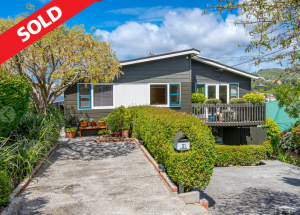New Zealand’s property market is showing all the signs of being a two-tier system.
Auckland median house prices are increasing 2.5 per cent year-on-year, but the rest of the country (excluding Auckland) shows growth of 11.4 per cent year-on-year according to the latest data from the Real Institute of New Zealand (REINZ).
Auckland’s median price increased to $850,500 (up from $830,000 in June 2016) and the national median excluding Auckland increased to $431,000 (up from $387,000).
The REINZ House Price Index (HPI) for June 2017 further supported this trend indicating that Auckland house prices have decreased slightly by -0.6 per cent year-on-year but the rest of the country (excluding Auckland) showed growth of 9.2 per cent year-on-year.
Nationally, the HPI showed an increase of 2.8 per cent.
“While median prices in Auckland have increased slightly year-on-year, the City of Sails had the second lowest rate of growth in the country in comparison to the 8 per cent seen in June 2016 and 27.1 per cent increase seen in June 2015,” REINZ CEO Bindi Norwell explains.
“This is evidence that the ‘Supercity’ has showed signs of price growth slowing down – if you look at the month-on-month figure it shows a drop of -0.8 per cent.
“However, most regions across the rest of the country experienced double-digit (or close to it) growth and record median prices have been seen in three regions this month – Bay of Plenty ($555,000), again in Manawatu/Wanganui ($280,000) and Tasman ($581,000) highlighting the buoyancy across the rest of the country and the normal property cycle where regions are typically behind Auckland in terms of the growth curve.”
Sales volumes across the country have continued to decline – in Auckland they are down -33.2 per cent for the year to June and nationally they’re down -24.7 per cent for the same period.
The regions that experienced increased volume this month were Tasman (which saw an increase of 25 per cent) and the West Coast (a 3 per cent increase year-on-year).
“We know that it’s winter and the election is just two months away now which typically impacts the number of properties sold in the market,” Norwell says.
“The number of properties sold across the country is the lowest we’ve seen in the month of June for three years now – particularly in the $500,000 and under property price bracket.
“This slowdown in transactional activity, but stabilising price trend highlights the underlying dynamics between housing demand and housing supply, with population growth continuing to rise faster than building consents and dwelling supply,” she continues.
The median number of days to sell a property nationally increased by 5 days – from 31 to 36 days in comparison to June 2016.
Regionally, Hawke’s Bay again had the shortest number of days to sell (28), followed by Wellington and Southland (both on 31 days) and property on the West Coast took the longest number of days to sell (128), followed by Northland (47 days) and Bay of Plenty (41 days).
In Auckland, the number of days to sell increased by 7 days year-on-year (from 31 to 38 days).
“The June figures show us that a number of things are happening across the residential real estate market – inventory levels are impacting pricing, LVRs are having a significant impact in terms of buyers’ ability to purchase properties (particularly for first time buyers) and that the major trading banks are being more cautious with their approach to lending – particularly their view of how highly leveraged Kiwis are when it comes to properties,” Norwell says.
“Talk of a decline in prices may be premature with the seasonally adjusted median price trends still rising across many regions in New Zealand.
“The Auckland market is the most mature in terms of the property cycle, however, at worst, prices in the Auckland region are steady at present.
“The data also shows an emerging trend of section sales in Auckland occurring more quickly than dwelling sales, highlighting that demand for sections is still rising in Auckland while demand for dwellings is easing,” continues Norwell.
“With the looming election, Auckland prices are showing all the signs of stabilising that we would normally expect and we anticipate this being a similar trend over the coming months until the election is over.”
The number of properties available for sale rose by 1,895 in June compared to 12 months ago, although the number of properties for sale in the Auckland region has increased by 3,097 (57 per cent, providing more choice to buyers.
Excluding Auckland, the number of properties for sale fell by 1,203 (-7.4 per cent).
Compared to June 2016 the number of listings rose 4.4 per cent in Canterbury, 5.0 per cent in Wellington and 4.5 per cent in Waikato.
The largest declines occurred in Northland (-367), Manawatu/Wanganui (-353) and Southland (-269).
The number of properties sold by auction continues to decline across New Zealand with 828 auction sales in June representing 14 per cent of all sales.
This compares to 24 per cent of all sales in June 2016 and 13 per cent in May.
For the year to June, the number of auctions has declined by 27 per cent, or 5,706 sales.
Between June 2016 and June 2017, the number of homes sold for more than $1 million fell by 29 per cent to 779 homes to equal 13.2 per cent of all dwellings sold.
The number of dwellings sold under $500,000 has declined by 1,153 between June 2016 and June 2017 compared to a fall of 1,938 for all dwellings or a decline of 24.7 per cent.



